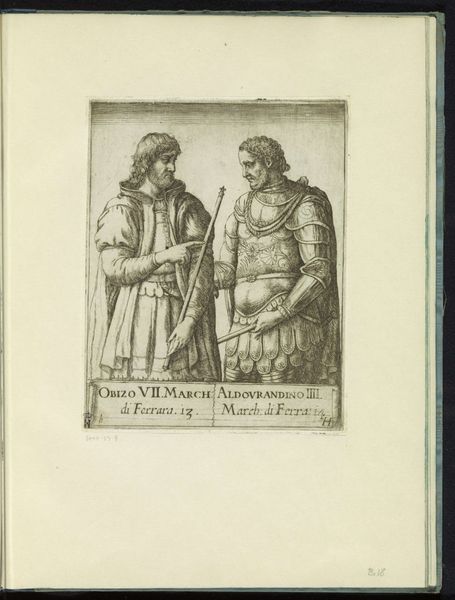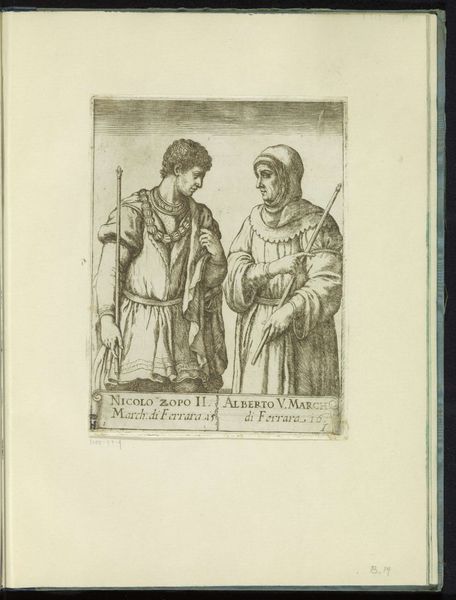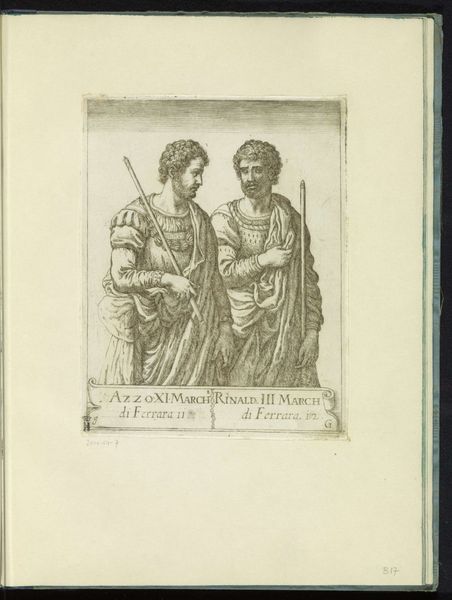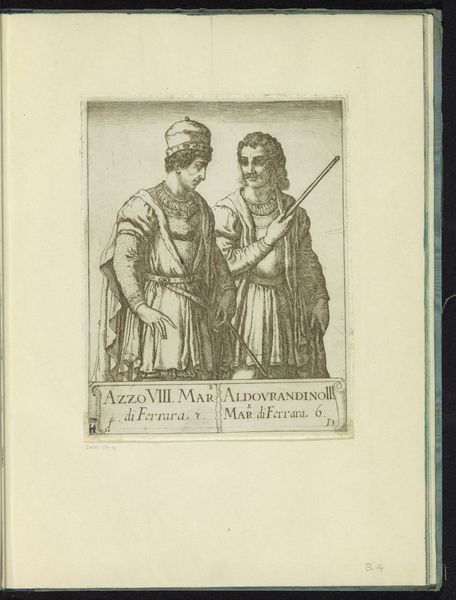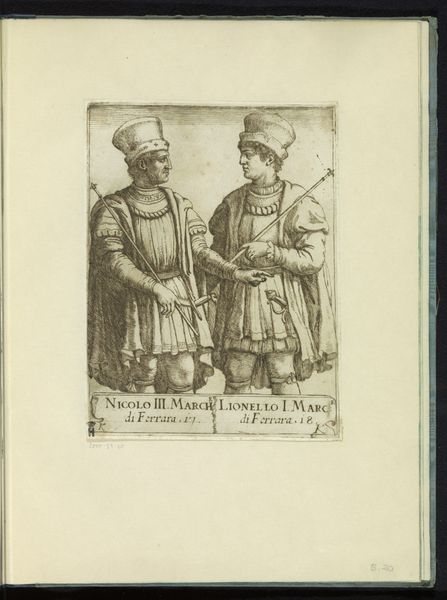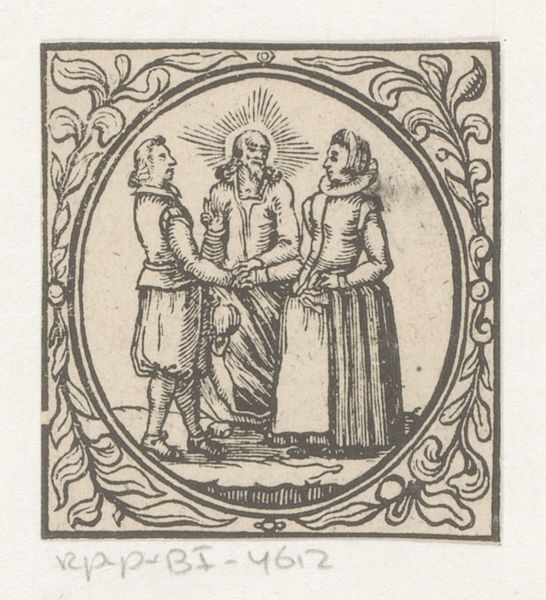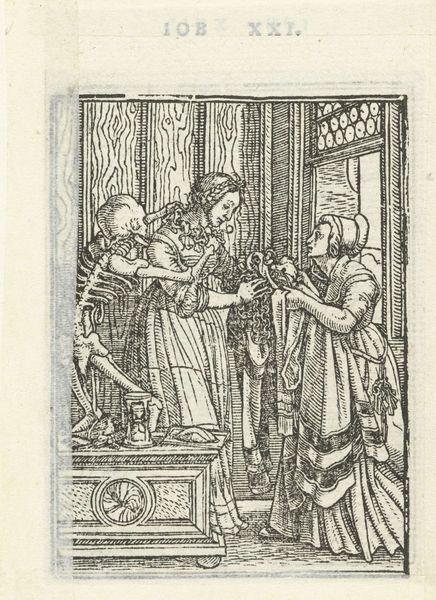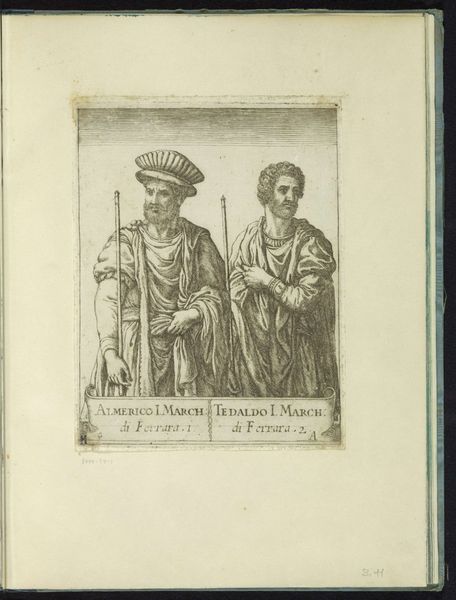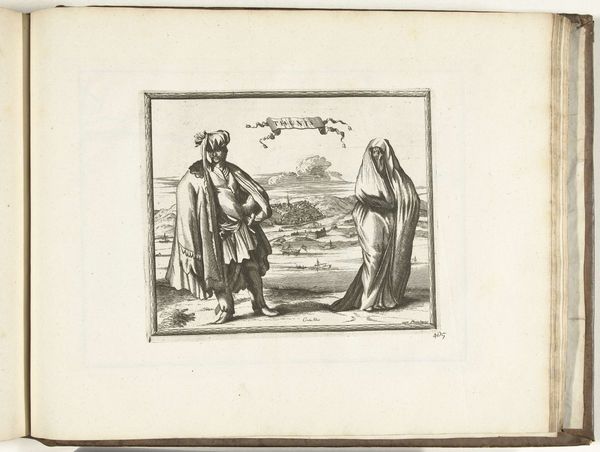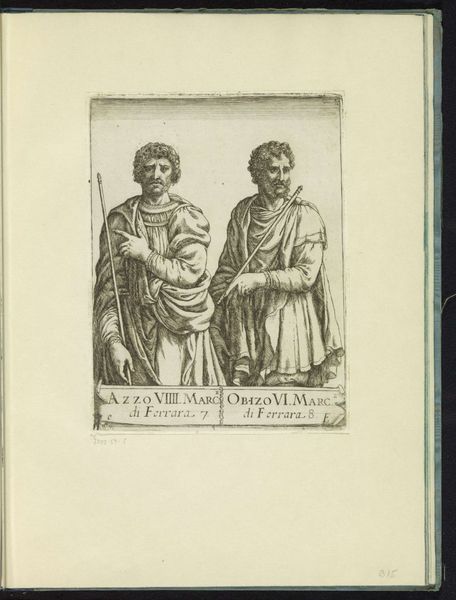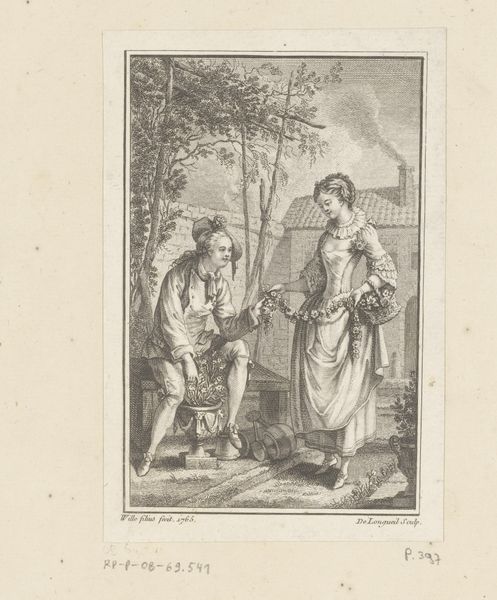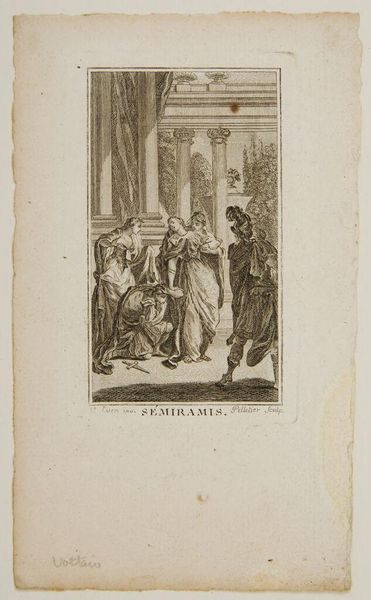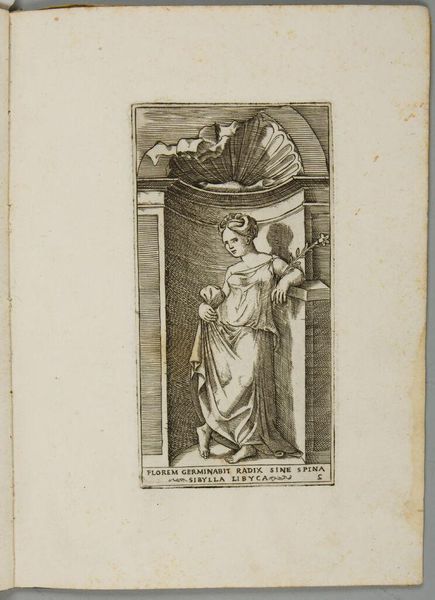
Dubbelportret van Bonifacio III van Canossa en zijn dochter Matilda van Canossa 1641
0:00
0:00
print, ink, engraving
#
portrait
#
baroque
# print
#
pen sketch
#
ink
#
history-painting
#
engraving
Dimensions: height 184 mm, width 141 mm
Copyright: Rijks Museum: Open Domain
Curator: Welcome. Today, we're examining a print from 1641 attributed to Caterino Doino. It's entitled "Dubbelportret van Bonifacio III van Canossa en zijn dochter Matilda van Canossa," which translates to "Double Portrait of Bonifacio III of Canossa and his daughter Matilda of Canossa." The piece employs engraving and ink on what appears to be laid paper. Editor: My first impression is… melancholy. They seem to be looking off to either side, and though they are next to each other there seems to be a distinct divide. Curator: That's a sensitive reading. The figures represented were significant historical actors, particularly Matilda, who later became a powerful Margravine and an important figure in medieval Italian politics. This portrait attempts to capture both their individual power and dynastic connection. I agree with your suggestion of sadness, it evokes this mood through its dark ink work. Editor: Their clothing is quite beautiful in the way it is illustrated. Each fold and seam drawn into the cloth! Look at the way their robes hang and drape across their arms and waists. Each seems to carry an object—a staff. Is that related to this family's line? Curator: Very insightful observation! These objects signal authority. The staff often served as a symbol of power and leadership. As you notice, Doino masterfully employs Baroque style conventions, emphasizing detail and realism through meticulous engraving. Considering gender and power dynamics, what message do you think Doino sends by portraying them this way? Is he focusing on Matilda as merely a vessel for carrying on Bonifacio’s legacy? Or something more? Editor: Oh that’s something to mull over...I feel both readings could hold, but I don't feel it has a gendered leaning; simply the continuation of lineage! There's a palpable sense of formality. Doino's skillful lines capture their nobility and also hint at the weight of expectation they bear. Curator: Exactly. Perhaps he seeks to immortalize them, or rather mythologize this image. In this piece, we have history, artistry, and political implications, that are all embedded within the very nature of the figures themselves. Editor: I leave feeling deeply curious about their legacy and role in the lineage that sprung from their family line. Curator: A potent glimpse into the past, wouldn't you agree? Thanks for sharing your insights!
Comments
No comments
Be the first to comment and join the conversation on the ultimate creative platform.
